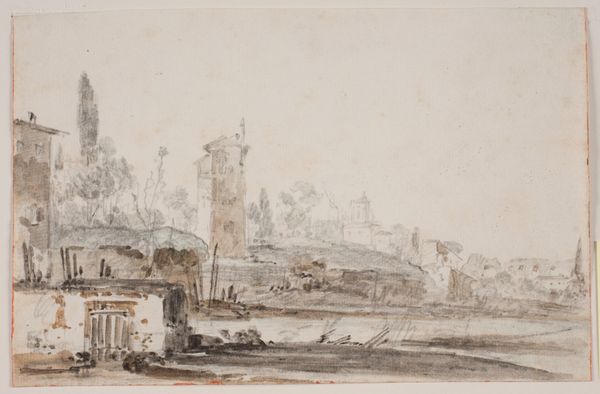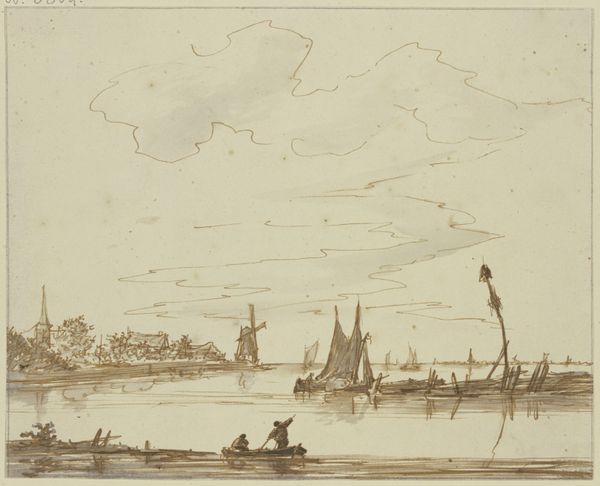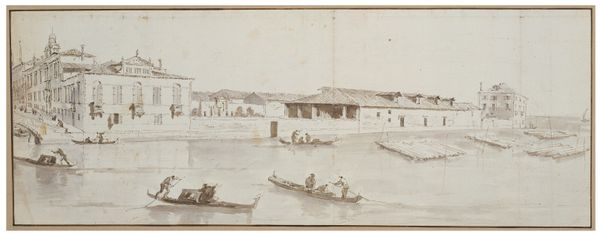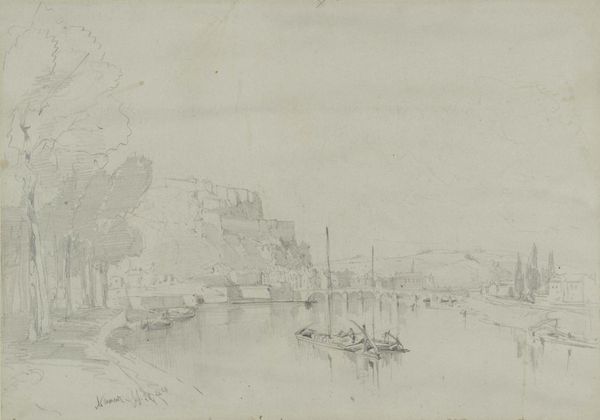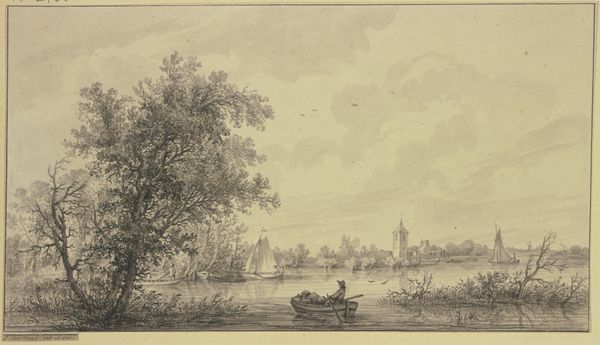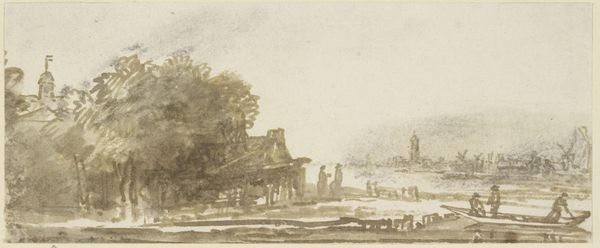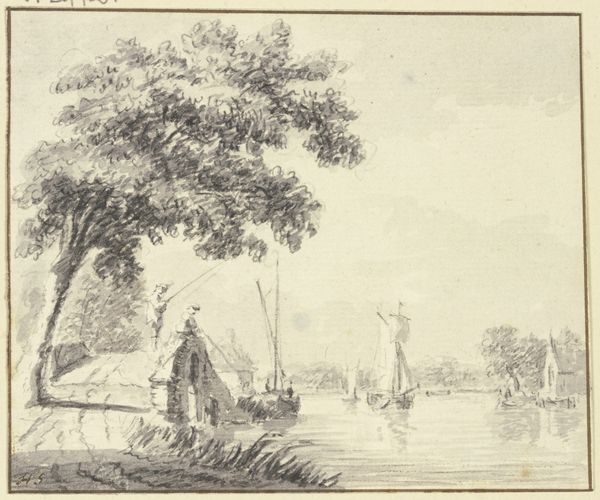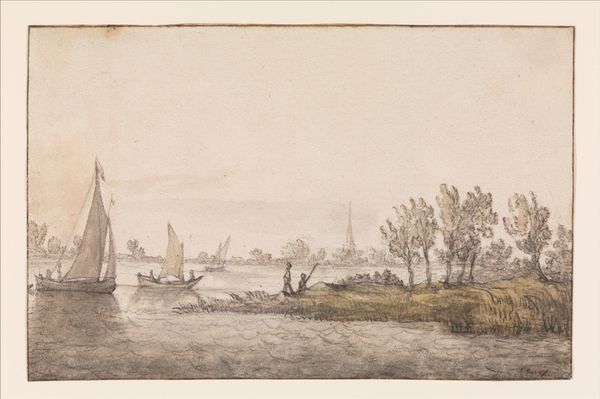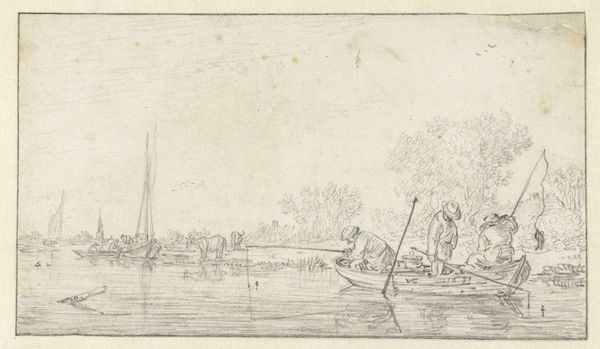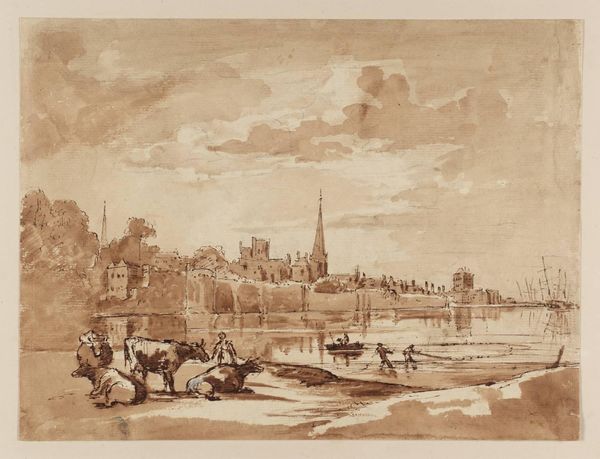
drawing, ink, pencil, architecture
#
drawing
#
baroque
#
landscape
#
ink
#
pencil drawing
#
pencil
#
architecture
Copyright: Public Domain
Curator: Let’s consider this compelling landscape drawing here at the Städel Museum. Rendered in pencil, ink, and wash, this baroque era piece is titled "An einem Flusse ein Kalkofen, in welchen eine Pritsche führt" – a rather descriptive "A Lime Kiln on a River, Leading to a Berth." The artist is Hendrik Spilman. Editor: My eye immediately goes to the strong contrast of the lime kiln juxtaposed against the lively scene on the water. The architectural form feels weighty and permanent in comparison to the bustling river traffic. Curator: That kiln is indeed a dominating presence. Historically, these kilns were often situated along waterways to facilitate the transport of limestone and the quick distribution of lime, essential to construction and agriculture at the time. It’s interesting to observe the presence of industry alongside scenes of everyday life and leisure. It speaks volumes about the era’s reliance on riverine infrastructure. Editor: Yes, that interplay tells a story. Lime often symbolizes purity and transformation, doesn't it? The presence of a religious building's spire along the horizon reinforces that symbolic connection – almost as though this transformation happening at the kiln has a transcendent parallel in society. Curator: I hadn't considered that connection, fascinating! It underscores how these seemingly mundane industrial structures were actually quite central to the social and economic fabric. It highlights the intersection of landscape, labor, and the broader social order. Editor: And look at how figures, presumably workers, move to and from it. Do you suppose they're crossing a symbolic bridge between the toil needed to sustain life, and a more hopeful future promised by a sacred way of life in that spire in the background? I see echoes of alchemic transformation. Curator: An intriguing perspective. It reveals how Spilman's seemingly simple depiction of a landscape can unpack much larger, societal commentaries. I like how you observed that detail of workers traversing to and from the kiln - so the bridge becomes a device Spilman has added for our interpretations, adding further layers for modern audiences, while also revealing details for 18th-century contemporary interpretations. Editor: Indeed. There’s a certain beauty in how a functional piece of infrastructure like this can become infused with broader, lasting meaning, if only we slow down to reflect on it. Curator: Well, I've learned to appreciate lime kilns much more profoundly today. Editor: As have I. This landscape drawing provides an interesting portal to reflect on those social forces and symbolisms.
Comments
No comments
Be the first to comment and join the conversation on the ultimate creative platform.


